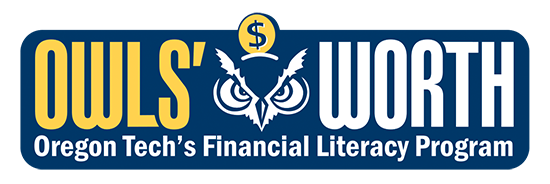


It is important to learn how to manage your money both while you are a student and after you graduate. This page offers advice on budgeting, loans, terminology, and more to help you make wise financial decisions. The Oregon Tech Financial Aid Office will also hold periodic educational events on campus.

Learn how to keep track of your income and expenses, save for your goals, and adjust your budget as your life changes.

Your expenses will change after you leave school. For example, if you recently graduated, you usually won't be required to begin paying off your student loans for six months, but when that payment is added to your monthly expenses, it will have a big impact on your budget. When you leave school, you'll want to update your budget to include student loan payments, as well as your new income and living costs. Leaving school can be an exciting (and stressful) time, but you don't want to stop tracking and managing your finances.
Additional Resources:
It is important to keep track of your loan amounts, who is servicing your loans, and to know your options for repaying loans.
The National Student Loan Data System (NSLDS) is the U.S. Department of Education's (ED's) central database for student aid. NSLDS provides you access to view your federal loans, grants, and aid status.
Find the right repayment plan for you, learn how to make payments, get help if you can't afford your payments, and see what circumstances might result in a loan being forgiven, canceled, or discharged.
Master every aspect of your financial life with expert advice and how-to guides on topics ranging from investing and debt management to finding a new job.

Access information regarding your free credit reports. The Federal Trade Commission provides a broad base of consumer information to assist you with maintaining a good, clean credit report.
You can check your credit report every 12 months for free at AnnualCreditReport.com. It is the official site to help consumers obtain their free annual credit report online.